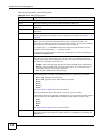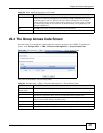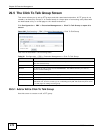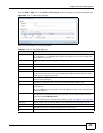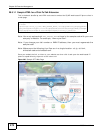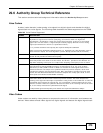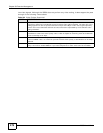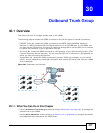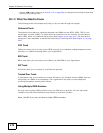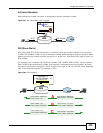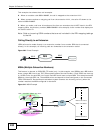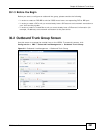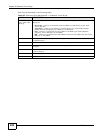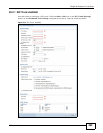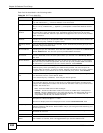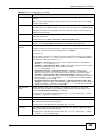
Chapter 30 Outbound Trunk Group
ISG50 User’s Guide
478
•Use the LCR screens (starting in Section 31.2 on page 505) to configure the Configure Least Cost
Routing (LCR) dialing rules.
30.1.2 What You Need to Know
The following terms and concepts may help you as you read through the chapter.
Outbound Trunk
The outbound lines define a connection between the ISG50 and the PSTN, ISDN, ITSP or your
trusted peer (another ISG50). To make calls from extensions on your network you still have to
define LCRs, which are outbound dialing rules (See Chapter 32 on page 519). You also have to
configure an auto-attendant to handle the forwarding of incoming calls (See Chapter 31 on page
503).
FXO Trunk
FXO trunks allow you to connect to the PSTN (through your traditional analog telephone service
provider) or a traditional analog PBX in your organization.
BRI Trunk
BRI trunks allow you to connect to the ISDN or an ISDN PBX in your organization.
SIP Trunk
SIP trunks allow you to connect to a VoIP service provider.
Trusted Peer Trunk
Trusted peers refer to connections to another SIP server (for example another ISG50) that has
configured your ISG50 as a trusted peer. Your organization may want to use trusted peer
connections between remote branch offices.
Using Multiple ISDN Numbers
You may have multiple ISDN numbers from your ISDN service provider. You can map these
numbers to the AA (Auto Attendant) and directly to extension numbers.
Note: Use AA if you do not have multiple ISDN numbers.



